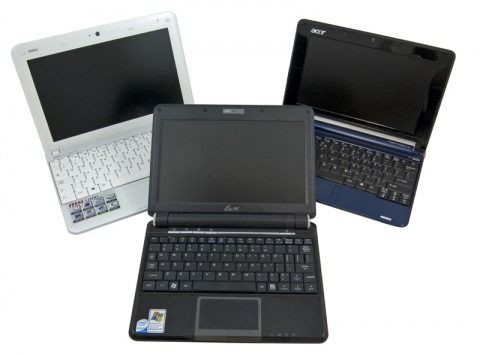Segment Saturation: Where Next For Netbooks?
Read SlashGear – or any tech website – even semi-regularly and you'll see new netbooks appearing pretty much every day. The niche that started off with the Eee PC 700 as an unusual budget ultraportable has flourished to the point where most major notebook manufacturers have at least one on sale or in the pipeline. Just as common, however, as the new models is the phrase "another 1.6GHz Intel Atom"; the netbook market may not have reached saturation point, but has our interest in the same old hardware?
Page back through the options, and it's more than Intel's super-efficient processor that's become a standard. Screen size, resolution, RAM, storage and even the number of USB ports seem locked to a few generic, universal spec-sheets.
Part of this is a side-effect of building to a price, particularly when that price is meant to be significantly low. Customers were told that netbooks would eventually fulfil the promise of a $100 laptop; now manufacturers are having to work to back up that promise with hardware, in an economic and technological climate that, frankly, can't support it. The cost of hardware, development and design alone leaves little room for profit, never mind for stylistic or functionality flourishes which would could make the netbook particularly interesting.
It's normally too easy to target Microsoft, but their initial limitations on applications for Windows XP Home – intended to prevent it from eating into Vista market-share – should shoulder some of the blame. Initially the software giant said no screen sizes larger than 10.2-inches and no storage greater than 80GB; those factors have been increased recently, to 14.1-inches and 160GB respectively, but the CPU must remain single-core and RAM can only be 1GB maximum. Those details have certainly stymied any degree of core difference between models.
Still, those restrictions aren't in place for Linux-powered netbooks – and nor are there software licencing fees – so it would've been good to see some alternatives running Ubuntu, SUSE and the other flavors currently so successful.

What makes the growth in the segment even more surprising is that several of the players have publicly stated their dislike of, or confusion about, netbooks as a product. Fujitsu's Paul Moore, senior director of mobile product management, notably claimed that the category "doesn't add up" in terms of profit margin. Sony's Mike Abary, VP of information technology products, described netbooks as "a race to the bottom" earlier this year, then last month was forced to concede that Sony were planning their own as the company "[has] to participate".
Speaking personally, as someone who writes about this segment every day, it's become increasingly hard to remain enthusiastic about the stream of devices. Even if they're new designs, rather than rebadges of existing OEM models, the fact that they've been built to a cost means that the differences are incredibly slight. You either have to enjoy getting out the virtual magnifier and searching for what makes them unique, or you have to look elsewhere to get your kicks. There are interesting things happening on the fringes of the niche – Raon Digital's Everun Note, for instance, with its speedy AMD processor, or even ASUS' latest so-called luxury netbooks – but there's inevitably a price impact that pushes such models into the realm of standard notebooks.
Soon Intel's dual-core Atom 330 processor will begin appearing in products – presumably with an accompanying tweak to the XP criteria by Microsoft – and, for a while, that will shake up the segment and introduce some new discussion. My concern, though, is that after a month or three we'll be back to "yet another Atom netbook" with the same old new specs and the same old new benchmarks. Either customers are going to have to show some willingness to buy based on criteria other than minimum price, or manufacturers are going to have to take some design risks; otherwise netbooks could become the bland white bread of the computing world.
[Images via Engadget & MobileComputerMag]
